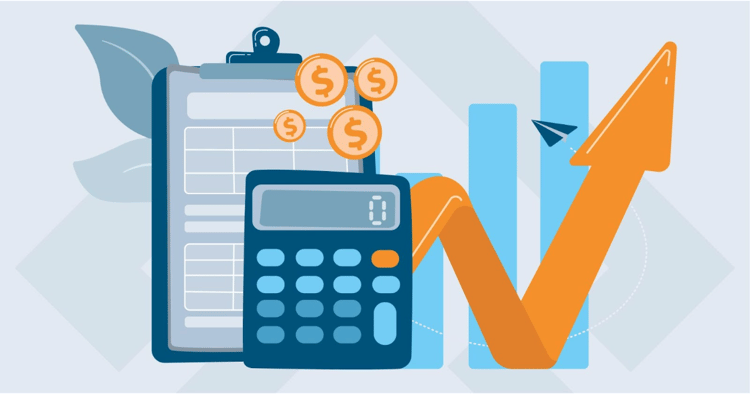What Financial Skills are Necessary to be a Product Manager?

A company developed a successful AI product based on thorough customer research and launched it quickly, generating revenue. However, the cost of maintaining the necessary tool infrastructure for a growing customer base and promised price tiers made the product unprofitable. Despite doing almost everything correctly, the product team was directed to shut down the product because it was losing money for the company. The company needed to build a good pro forma for the product.
Product Managers and Pro Formas
Product managers have a lot to think about and be responsible for. It’s a dynamic role that requires innovation, building and maintaining relationships within one’s company and understanding customers’ urgent and expensive problems. Importantly, some level of financial acumen is part of the work, and it can be daunting for some product managers.
There are varying perspectives about the level of financial expertise necessary to be a good product manager. Tyler Hogge from Divvy gives some tactical guidance for product managers to own and maintain revenue awareness and plans for their products. John Macke argues that the perspectives of Neil McElroy of P&G and Ben Horowitz of Andreeson Horowitz aside, being a full “CEO” of a product and owning all aspects of its financial performance is a bit much. General financial acumen, accountability, and awareness of a product’s impact on the company’s bottom line are sufficient.
All perspectives being taken into account, product management professionals need to be aware of a few things that create risk in their products’ performance:

-
The financial inputs and outputs of their products. The finance team allocates expenses to product lines, and product managers need to know which ones. If there is under/over allocation of indirect costs like HR, IT, and G&A, the profitability of a product can be distorted. This in turn will impact how executives decide to invest or allocate resources to a specific product. It’s on the product manager to engage the finance team to get this information.
-
Whether or not they have responsibility for the P&L of their products. This seems simple, and our perspective is that they should. However, this varies by company and by the department. This topic needs to be explicitly and proactively addressed and managed by Product Managers.
-
The financial health of their products. Whether or not a Product Manager is assessed based on the financial performance of her products, she needs to know that health. By “health” we mean profitability: is the product costing more or less to produce than the revenue it is generating, and in what direction is this profit (or loss) trending?
In this post, we cover how to build and manage financial projections for products and how Vecteris can help.
The Nuts and Bolts of Pro Formas
The complex financial analysis, predictions, and mathematical models that are often associated with the art of finance can be intimidating for folks who have come to the professional specialty of product management due to a passion for innovating and finding solutions that directly address the needs of their customers. However, broken down into bite-sized-building blocks, creating and managing a P&L shouldn’t be so bad.
In product management, a pro forma is used to estimate future sales, costs, and profits, as well as to evaluate the risk associated with a product. Pro formas consist of sales projections, cost of goods sold, operating expenses, and capital expenditures (if applicable). These components are used to create a complete picture of a product's potential financial performance. Pro formas are based on historical data and future projections that may not accurately reflect actual outcomes. They are often limited by their reliance on data that may not be available or accurate, and the ways in which they may be subject to various biases and errors.
Here are the general steps to create a pro forma for your product:
-
Determine assumptions: Determine the assumptions that will drive your pro forma. This could include factors like revenue growth, operating expenses, development costs, sales and marketing costs.
-
Project future financials: Use these assumptions to create a projected financial statement. This will include a projected income statement and cash flow statement.
-
Analyze results: Review the projected financial statements to see how the product will perform under the assumptions used. Adjust assumptions as necessary to ensure the projections reflect realistic scenarios.
-
Engage your company’s finance team along the way and once you’ve done all of the above steps. Get their input and determine what other financial data at your company is relevant to product and its growth and success.
-
Use the pro forma: Once your product has a pro forma, use it to evaluate the financial impact of various scenarios and to help secure support from your company for your product. Check your work and iterate on it. Perhaps sales of one of the subscription versions of your product at a high price point are higher than expected. Track that performance in your financial models and adjust long-term projections. Share with your leadership.

Creating a pro forma for a product requires an understanding of financial statements and financial modeling. If you are unfamiliar with these concepts, don’t worry. Check with your finance team, or reach out to us for a conversation and get the support you need.
One pro forma that we produced here at Vecteris was for a U.S.-based nonprofit. Our engagement with them was a stem-to-stern concept design and testing project. We facilitated their fast development of a brand-new technology solution for their constituents. One of our deliverables was a pro forma for the concept for them to take to potential donors to find support for the product. We delivered a financial model that had simple instructions for manipulating the variables that we knew should be easily toggled by our client. These included vendor costs (as they depended on the vendor), sales projections, and marketing and sales resources. The organization was able to use this tool to let prospective donors know there was rigor behind the amount of money they were asking them to contribute to the development of their new technology.
In conclusion, we recommend that you stay on top of the topic of managing the financial health of your product, and not be intimidated by it. If you approach the financial projections and health of your product methodically and regularly, you’ll gain and maintain a high level of comfort in this vital aspect of the work of Product Management.
Don’t hesitate to contact us if you want to run your products’ financial health and your acumen about it by our team!
